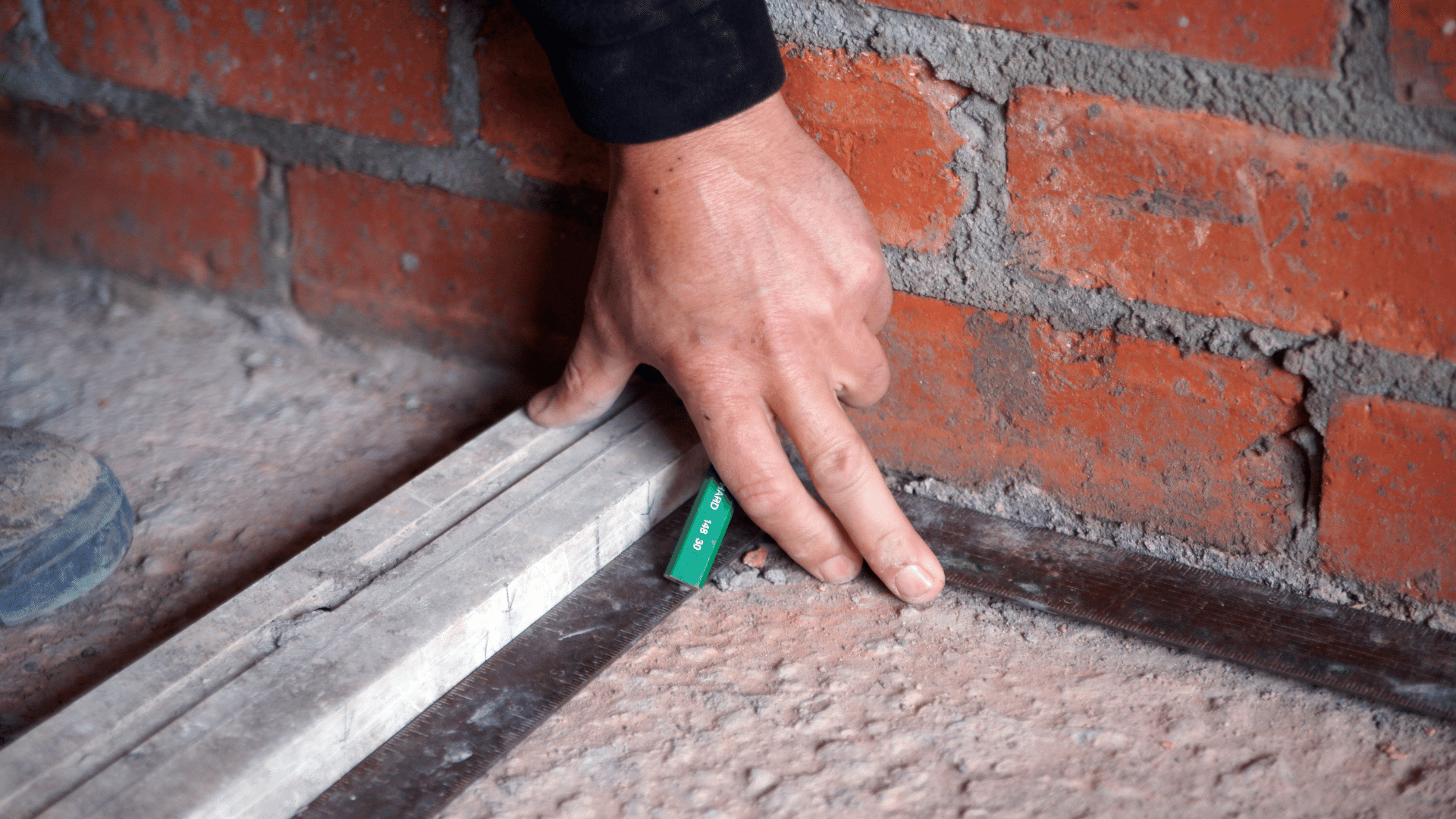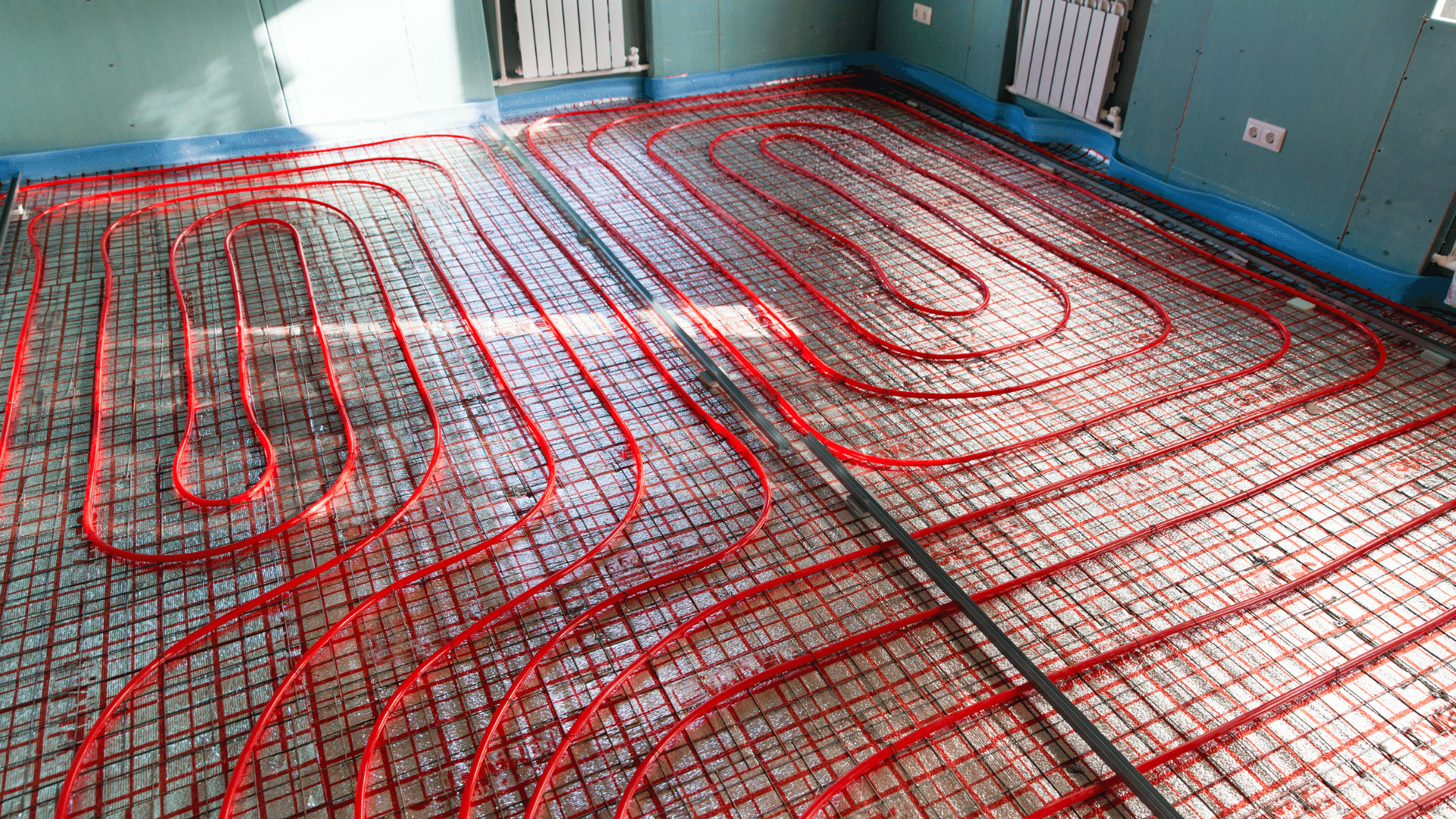Electric underfloor heating has been around for years. It was first introduced in the UK in 1902 when electric heaters were installed to warm and dry the houses of patients in St. Bartholomew’s Hospital, London. However, this wasn’t until after WW2 that electric heating started being considered a viable option for domestic use and commercial properties alike.
So, you’re looking into installing underfloor heating in your home and wonder which type is best for you? Let’s have a look at the article about how to install underfloor heating.
4 Easy Steps to Underfloor Heating Installation
Clean up the floor

Even modern pipes are tough and durable, clean the floor in depth before installation. If you’re installing Underfloor Heating, you may need to lay a damp-proof membrane on the subfloor before installing the insulation layer that comes with the kit. This membrane is a water-resistant material that acts as a barrier between your floor and the water pipes underneath it. It also helps to prevent moisture from seeping into your home and causing damage to your building’s foundation or other structures.
Measure Up

Start by drawing a rough sketch of your room on paper, and make sure you include measurements for all the existing fixtures that you want to keep.
Once you have your measurements, it will be easier to calculate how much area will need to be covered by your UFH matting. If you’re not sure how much space there is between walls or doors, don’t worry—your fitters will help you with this part!
Just remember: subtract the areas where the fixtures will be and leave around 40 to 50mm around the edge of the room. The wires won’t be laid flush against the wall—so make sure you mark these areas first so that you can see exactly where each fixture will be once replaced!
Floor Insulation

Did you know that if you don’t insulate your underfloor heating system, it will cost more in the long run?
There are a lot of reasons why you should insulate your underfloor heating system. It’s one of the easiest ways to save money, and can make your electric underfloor heating system run much more efficiently.
You only need to lay down a thin layer of insulation on top of the floor, so it’s easy to do yourself. But what if you don’t have time? Or maybe you’re worried about damaging your floors? We’ve got solutions for both!
Underfloor Heating Testing

Before you start, make sure that you have tested the system before and after all stages of the installation. If you are unsure, just ask your electrician to do this before the final floor covering goes down.
Conclusion
There are equally long lists of pros and cons for underfloor heating. Both systems are flexible, versatile and effective. Whichever one you choose could make a great difference to your home, so it’s worth thinking carefully through which one is right for you. In the end, it probably comes down to personal preference, but we hope that this guide has given you some insight into the two main options and how they can work together in practically any home.
The pros and cons of underfloor heating are:
Pros:
-Wet systems are generally cheaper than dry ones.
-Wet systems have a longer lifespan than dry ones.
-It’s easier to install underfloor heating than other types of central heating, because the pipes don’t need to be cut or installed in the wall.
-Underfloor heating is an environmentally friendly way to heat up your house or apartment.
Cons:
-Some people find it difficult to get comfortable on cold floors, especially if they’re wearing shoes or socks.
-Wet systems require more maintenance than electric ones do, since water needs to be replaced regularly.
– Wet underfloor heating average cost: £430 per 20 sq/m (including a full kit)
– Electric underfloor heating average cost: £140 per 1 sq/m
Leave a Reply